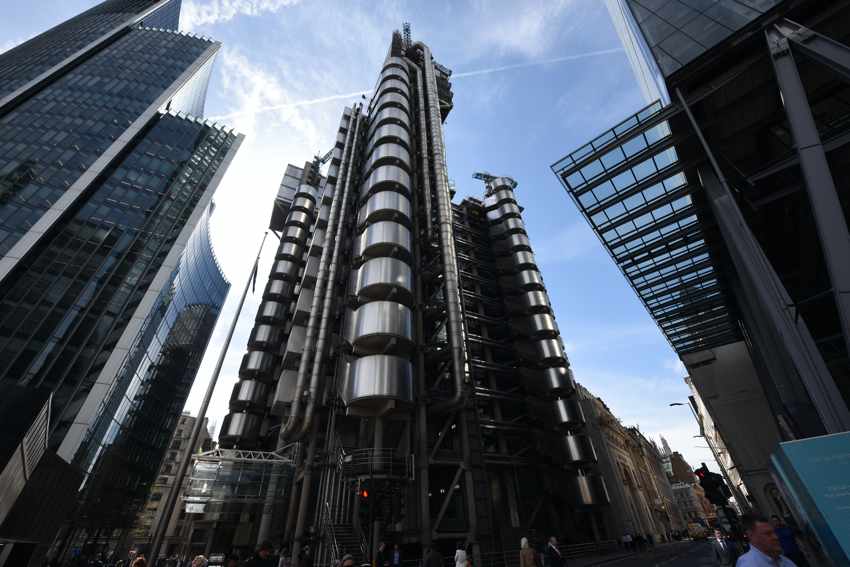Lloyd’s profits, major losses decline, but property underperforms again

The Lloyd’s insurance and reinsurance market has reported a full-year 2021 profit of £2.3 billion, with a combined ratio of 93.5%, which it says is “the best quality result reported for six years.”
Representing a “material turnaround in performance” over the £0.9 billion loss and combined ratio of 110.3% in 2020, Lloyd’s has delivered a far better set of results, even though 2021 saw a still challenging number of large losses.
As well as improved results, Lloyd’s players and investors are also benefiting from improved pricing, with premium rates up 10.9% and now 16 consecutive quarters of positive rate movement having been experienced.
Across 2021, Lloyd’s paid some £19.9 billion of gross claims and has now paid £2.9 billion in claims related to COVID-19, which is 86% of claims notified to date.
While the combined ratio came down significantly, by 16.8%, the attritional claims ratio has also declined at Lloyd’s, falling to 48.9%, while the expense ratio is also down at 35.5%.
Capitalisation remains very strong, with Lloyd’s reporting net resources that increased by £2.6 billion to £36.6 billion, and central solvency and market solvency ratios of 388% and 177% respectively (2020: 209% and 147%).
The underwriting profit for the year came out at £1.7 billion thanks to the reduced combined ratios.
But not all areas of the market were profitable in 2021 and the property lines of reinsurance business suffered, on the back of another significant catastrophe year.
In the property reinsurance segment at Lloyd’s, property catastrophe excess of loss represents the largest sector and major losses drove this segment to an underwriting loss.
The property reinsurance segment grew by 11.4%, in terms of premium, but reported an accident year ratio of 102.8%.
That was much better than 2020 though, which saw the accident year ratio at 112.8%.
Drivers of losses included all the major catastrophe events around the world, such as hurricane Ida, the storm Bernd floods in Europe and US winter storm Uri.
This segment also benefited from more reserve releases than the prior year in 2021, at 3.9%, suggesting the ratio could have been a little worse had it not been for building catastrophe reserves robustly.
The property insurance line at Lloyd’s, which is largely excess and surplus business focused, also suffered, with an accident year ratio of 104.7%, with the major catastrophe losses also the key driver of this underwriting loss.
“The loss ratio catastrophe component remains under pressure and a challenge to the market delivering against its agreed performance plans for 2021,” Lloyd’s explained. De-risking continues among syndicates, Lloyd’s highlighted.
This property line of business saw a significant 9.9% release of prior year reserves, so the underwriting loss could have been higher.
Major claims across the Lloyd’s market only came out at £2.989 billion for 2021 (down from 2020’s £5.967bn).
That equated to 11.2% of net earned premium, much lower than 2020’s 23% when COVID had significant impacts.
There was an increase in reinsurance recoverables, largely due to the major catastrophe losses of 2021 as well as the use of retrospective protection, which Lloyd’s said, “reflects the reinsurance risk transfer strategy of the Lloyd’s market, the nature of loss events experienced during 2021 and risk mitigation actions being taken to assist in the management of legacy exposures.”
The property lines of business have been perennially challenged at Lloyd’s, with catastrophe activity around the world the major loss driver.
But there are signs of improvement and the results are comparable with other major insurers and reinsurers around the world this year.
The performance of the property segment will likely have driven some losses to investors allocating to specific property related portfolios or underwriters in the Lloyd’s market. While overall, Lloyd’s as a spread of performance looks to have delivered very attractive returns for 2021.
But it’s still not possible to simply access the returns of a spread of the Lloyd’s market’s underwriting, while the specific London Bridge Risk PCC ILS vehicle remains focused on funding specific Lloyd’s members.
For those ILS investors seeking to source differentiated returns, the ability to enter into a quota share with Lloyd’s central underwriting performance through London Bridge Risk would have delivered a positive result for 2021, in a year when catastrophe specific strategies suffered.
Which recalls the many attempts to create investable indices of Lloyd’s underwriting performance, something that would remain appealing to many.
This is why we expect Lloyd’s will continue evolving the LBR strategy, as well as other routes to enable large investors to participate in the underwriting returns of the market, especially right now when many investors are clamouring for something different.
John Neal, CEO, Lloyd’s, commented on the results announcement, “As we announce these results today, our thoughts are first and foremost with the people of Ukraine. In a world buffeted by increasingly complex and connected risks – from the pandemic to a geopolitical conflict – the Lloyd’s market is standing by its customers and supporting their recovery when things go wrong.
“Against this backdrop, I’m pleased to see the market return to profitability following the decisive action taken in recent years to improve performance. The market’s underwriting discipline will enable sustainable profitability in the years to come, coupled with a balance sheet that can support our ambition to grow profitably.”






